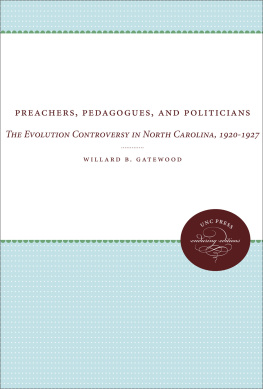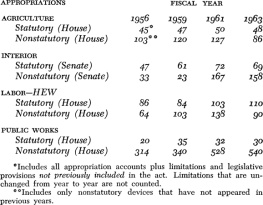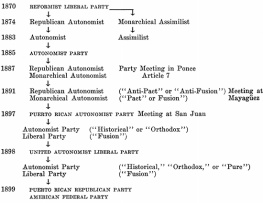CHAPTER 1 : WRITING AND USING THE MATERIAL
T HIS book is the outcome of a course which, for one reason or another, was attended exclusively by practicing public welfare workers of whom only two had had any formal social work training. Officially the course was listed as Extension Course Social Work 210 or Social Casework I. The material for the course, with the exception of four canned casesthat is, actual cases carried by public welfare workers but not by members of the classwas cases on which the members of the class had themselves worked within the past few months. The canned cases were used as a starter until the classs cases could be collected, arranged and mimeographed. The method of presentation, the reasons for which are explained in the final chapter, was to have a panel of five class members answer certain prescribed questions about each case and then to throw the case open for general discussion. In all, nineteen such cases were discussed.
In the course of these discussions certain principles about casework began to be formulated. Some of these principles have been discussed in casework literature, notably in Herbert Aptekars Basic Concepts in Social Casework (Chapel Hill: University of North Carolina Press, 1941). Others evolved from the material discussed, and one at leastthat of not disarming the clientseems to be a contribution of this particular class to casework terminology.
I realize fully that the conceptual framework here presented is not, in fact, an approved classification and that many other words could be used to convey the same or similar meanings. It is, however, a framework which proved useful in a particular setting and provided the class with something of a medium for the exchange of ideas.
After the class was over, several of the students expressed the conviction that they had, in participating in the discussions, understood a number of basic principles which they believed to be simple, practical and down-to-earth and which were of present help to them both in evaluating their own progress as welfare workers and in giving them something to work on in the future. Several expressed the wish that these could be made available to other workers in the field.
To do exactly this would be impossible. Only actual participation in such a discussion and relating it to ones own work can carry this kind of conviction. Nevertheless, it has been done as well as I know how to do it. It should be clear, however, that this is not a comprehensive exposition of social casework, or even of social casework in a public welfare setting. It is simply a rsum of what one group of public welfare workers found it profitable to discuss in twelve two-hour sessions and what they would like to share with their co-workers and with other interested people.
The use that can be made of material of this kind will vary, of course, with the purpose for which it is used and the relationship of the user to the public welfare field. While it has been suggested by those who have read it in manuscript that it may be of use to board members, to the interested public who may want to know more of what casework is about and even to the more experienced worker who could do with a refresher course in the principles of casework, it may be of most use to those preparing for the field, to those responsible for staff training courses or practitioner courses in a school of social work, and, first and foremost, to welfare workers themselves.
How can the welfare worker who does not have professional training make use of material such as this? Not, I think, as an easy reference to some of caseworks conceptualization or as a substitute for formal professional learning. For those in the field this is a test-book, not a textbook. The important question for the practicing worker is not Do I understand the concept of empathy (or ambivalence, or purposiveness) ? It is rather Does my work reflect the self-discipline and understanding that is discussed here? If not, how can I better matters? I would suggest, in fact, that workers either alone or in groups might want to select one or more of the admittedly overlapping concepts presented and test their own work against the principles set forth. Only as each idea means something in practice can it be said to be learned.
I should like to thank a number of people who read the book in manuscript and made many useful suggestions. These include, from the Bureau of Public Assistance, Miss Thomasine Hendricks, Mrs. Corinne Wolfe and Mr. George Narensky; the Commissioner of one and the Staff Training Consultants of three state departments of public welfare, Dr. Ellen Winston, Miss Ellen Bush, Mr. Curtis Ezell and Mrs. Elizabeth de Schweinitz; two local welfare superintendents, Mrs. Sarah Inman of York County, South Carolina, and Mr. Albert King of Iredell County, North Carolina; a welfare worker, Mrs. Inez Reed of Camden, South Carolina, three teachers of social work, Miss Mary Taylor of the University of Michigan and Dr. Arthur Fink and Mr. Everett Wilson of the University of North Carolina School of Social Work; a teacher of sociology and undergraduate social work, Dr. David Stafford of Guilford College, and two of my own students in an undergraduate course, Miss Eleanor Smith and Miss Marcia Smith.
It in no way detracts from the valuable help all these have given me to say that my deepest indebtedness must be to the students in the course. No one can teach such a course without learning a lot himself, and no such course is possible without the wholehearted engagement in it of its students. In a very real sense this book is dedicated to and owes more than I can express to the welfare workers of the two Carolinas whose enthusiasm, devotion to their jobs, willingness to engage in self-criticism and basic integrity, as well as their practical knowledge and sound common sense, transformed what might have been a time-consuming chore into a most heartening and, indeed, exciting experience.
CHAPTER 2: WHAT DO WE MEAN BY CASEWORK?
W HAT DO WE MEAN by the word casework ? If one asks this of a group of public welfare workers one gets all sorts of answers. To some the word has come to mean something that good public welfare workers, and especially those who have been to a school of social work, do or would like to do over and above certifying Mrs. A. for a grant or getting Mr. B. to a hospitalsomething intangible, rarefied and somewhat mysterious for which there is never enough time, but which, if given, will somehow cause clients to want to be independent or stop quarrelling with their wives. To others it seems to mean being always ready with the appropriate service for an individual clients needsvocational rehabilitation, psychiatric care, a foster homeanything as long as it isnt public assistance which isnt casework at all. People are apt to talk about something called casework services which can be counted and are, in their opinion, the only real job of the public welfare agency despite its rather routine duty also to provide public assistance grants.
This is not at all what I, or this book, or indeed many other people, mean by casework. Casework, as the word is used here, is simply the way in which the agency, through its workersor the worker, in the name of the agencymakes available a service which the agency is empowered to give. This service may be public assistance. As a matter of fact, it often is, since money is a very important factor in our civilization. But it can also be any number of other things, such as arranging for medical care, or supplying a foster home, or providing a way in which a delinquent child can stay at home through the use of probation, or help in filling out a social security form, or making available the particular and sometimes rather complicated service known as counselling.







